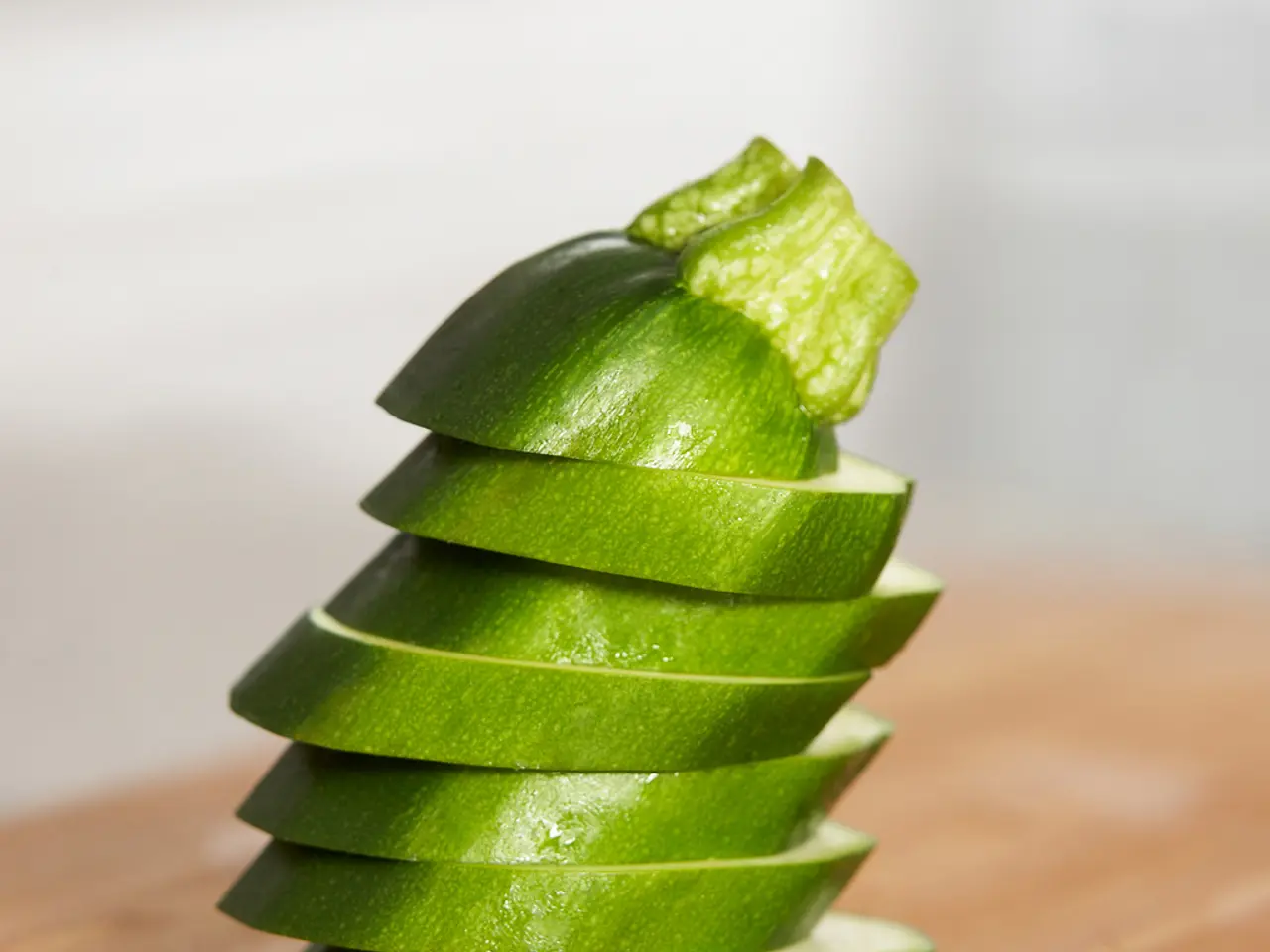Rapid Solutions for Common Cucumber Plant Issues
Cultivating healthy cucumber plants requires vigilance and a comprehensive approach to managing common diseases and pests. This article provides an overview of the most common issues affecting cucumber plants, their symptoms, and potential solutions.
Common Diseases
Anthracnose (Colletotrichum spp.)
Anthracnose is a fungal disease that causes small, circular dark or water-soaked lesions on leaves, yellow halos, sunken brown-black spots on fruits and stems, and possible pinkish spore masses in wet conditions. Leaf yellowing, premature leaf drop, and fruit rot may also occur. The disease spreads by fungal spores via water splashes, wind, infected tools, worsened by prolonged leaf wetness, high humidity, overcrowding, and crop debris.
To control anthracnose, consider planting resistant varieties, rotating cucurbit crops for 2–3 years, applying registered fungicides preventively, removing infected debris, keeping foliage dry using drip irrigation, pruning for air circulation, and monitoring for symptoms regularly.
Downy Mildew (Pseudoperonospora cubensis)
Downy mildew favors warm days and cool, humid nights and is characterized by angular, vein-limited chlorotic lesions on upper leaf surfaces and sporulation on leaf undersides.
To manage downy mildew, use resistant cucumber varieties, monitor disease forecasting and scouting, apply fungicides specific for downy mildew in rotation with different modes of action, and avoid overuse to prevent resistance.
Black Spot Diseases (Alternaria, Anthracnose pathogens)
Black spot diseases cause round or irregular dark spots with yellow halos, leaf wilting, and eventual defoliation.
Control measures include fungicide sprays (e.g., chlorothalonil), removing infected leaves, using drip irrigation, practicing crop rotation, and improving air circulation.
Common Pests
Common cucumber pests include aphids, cucumber beetles, and ants, which can cause leaf damage such as holes. Control includes regular monitoring, use of integrated pest management (IPM) techniques combining biological controls, cultural practices, and targeted chemical treatments if necessary.
Cucumber Beetles
Cucumber beetles are yellow-green with black markings and can transmit diseases such as fusarium wilt. To prevent cucumber beetles, consider using row covers to prevent adult moths from laying eggs on the plants or using insecticides where necessary. Neem oil can be used as a natural control for cucumber beetles.
General Management Practices
Maintaining proper plant spacing, avoiding overhead irrigation or watering plants early in the day, removing and destroying crop residues, rotating cucurbit crops, and monitoring crops frequently for early signs of pests or diseases are essential practices for maintaining healthy cucumber plants.
For detailed strategies, including biological controls and chemical options, consulting region-specific extension resources or expert agronomists is recommended.
Preventive Measures
Preventing common diseases and pests in cucumber plants involves early identification of symptoms, preventive cultural practices (resistant varieties, crop rotation, sanitation, irrigation methods), regular monitoring, and judicious use of fungicides and pest control agents as part of an integrated management plan.
Some wilt-resistant cucumber varieties include County Fair F1 and Little Leaf H-19. Cucumber mosaic virus affects many cucurbits, causing random white, yellow, and green spots on leaves and stunting plant growth. Powdery mildew is most prevalent in mid to late summer and can reduce photosynthesis and overall plant health.
By adhering to these guidelines, gardeners and farmers can cultivate healthy, productive cucumber plants, minimising the impact of common diseases and pests.
- To ensure optimal health and wellness of cucumber plants, it's essential to implement preventive measures against common diseases like anthracnose, downy mildew, and black spot diseases, as well as pests such as cucumber beetles. This can be done by adopting resistant plant varieties, practicing proper spacing, using integrated pest management strategies, and maintaining good home-and-garden hygiene.
- Gardening enthusiasts seeking to enhance their fitness-and-exercise and lifestyle can cultivate cucumber plants by following general management practices such as early identification of symptoms, preventive cultural practices like crop rotation and sanitation, and regular monitoring. This comprehensive approach will help maintain the health of the cucumber plants and improve the nutritional value of the resulting produce.
- For a thriving home-and-garden and healthy lifestyle, gardening activities like preventing common cucumber diseases and pests can contribute to overall health-and-wellness and fitness-and-exercise. By diligently following the outlined strategies and consulting regional resources, gardeners and farmers can peacefully coexist with nature while enjoying the fruits (and vegetables) of their labor.




